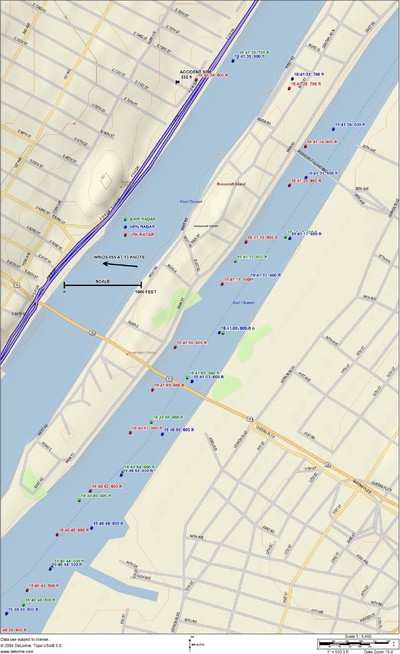Recommends East River Stay Closed To VFR Traffic
 On Tuesday, the National
Transportation Safety Board determined the probable cause of a
small airplane crash in Manhattan last October was the pilots'
inadequate planning, judgment, and airmanship in the performance of
a 180-degree turn maneuver inside of a limited turning space.
On Tuesday, the National
Transportation Safety Board determined the probable cause of a
small airplane crash in Manhattan last October was the pilots'
inadequate planning, judgment, and airmanship in the performance of
a 180-degree turn maneuver inside of a limited turning space.
As Aero-News reported, on
October 11, 2006 a Cirrus Design SR20 crashed into an apartment
building in Manhattan, New York City, while attempting a 180-degree
turn maneuver above the East River. The two pilots on board the
airplane were killed, including the owner of the aircraft, Cory
Lidle of the New York Yankees. The second occupant, Tyler Stanger,
was a commercial pilot with a flight instructor certificate.
Three people on the ground were injured, and the airplane was
destroyed.
"This accident is a great tragedy in which a pleasure flight
went horribly wrong and ultimately cost the lives to two young
men," said NTSB Chairman Mark Rosenker. "The pilots placed
themselves in a precarious situation that could have been prevented
by better judgment and planning."
In its final report, the Board stated that there were no system,
structural or engine malfunctions found. The pilot/owner was
properly certificated to fly the accident airplane. The pilot-rated
passenger was also a certified flight instructor and qualified to
have flown the accident flight.
Due to the complex accident forces involved in the crash
sequence, the Board's report states that it is not possible to
determine who was manipulating the controls at the time of the
accident. Also, due to the lack of a cockpit voice recorder or a
flight data recorder, it was not possible to determine who was the
pilot in control during the accident flight or if flight
instruction was being given.

The Board stated that the pilots did not aggressively bank the
airplane throughout the turn nor did they use the full available
width of the river (as shown by the graphic above, of the
aircraft's flight track). Radar data indicate that the airplane was
in the middle of the East Channel at the start of the 180-degree
turn as opposed to beginning the turn from the eastern shoreline.
In addition, wind out of the east would have effectively shortened
the available distance to successfully make the turn.
 In the report, it
states that investigators could not determine whether the pilots
were aware of the wind's effect on the execution of the 180-degree
turn. It is believed that they should have been able to observe the
difference in the ground track and heading during the flight to
determine that there was a prevailing wind from the east and
compensate for westward drift.
In the report, it
states that investigators could not determine whether the pilots
were aware of the wind's effect on the execution of the 180-degree
turn. It is believed that they should have been able to observe the
difference in the ground track and heading during the flight to
determine that there was a prevailing wind from the east and
compensate for westward drift.
Finally, the Board found that the pilots should have recognized,
during preflight planning or while they were considering flying up
the East River after they were already in flight, that there was
limited turning space in the East River exclusion area and they
would need to maximize the lateral distance available for
turning.
As a result of its investigation, the NTSB also repeated its
recommendation the FAA permanently prohibit visual flight rules
flight operations involving fixed-wing, nonamphibious aircraft in
the New York East River class B exclusion area. unless those
operations are authorized and being controlled by air traffic
control.
A temporary restriction on such
operations has been in effect since October 13 of last
year.
 ANN's Daily Aero-Linx (04.16.24)
ANN's Daily Aero-Linx (04.16.24) Aero-News: Quote of the Day (04.16.24)
Aero-News: Quote of the Day (04.16.24) Airborne 04.10.24: SnF24!, A50 Heritage Reveal, HeliCycle!, Montaer MC-01
Airborne 04.10.24: SnF24!, A50 Heritage Reveal, HeliCycle!, Montaer MC-01 Airborne 04.12.24: SnF24!, G100UL Is Here, Holy Micro, Plane Tags
Airborne 04.12.24: SnF24!, G100UL Is Here, Holy Micro, Plane Tags Airborne-Flight Training 04.17.24: Feds Need Controllers, Spirit Delay, Redbird
Airborne-Flight Training 04.17.24: Feds Need Controllers, Spirit Delay, Redbird





